A Ukrainian bomb, a Polish target, a Jewish victim
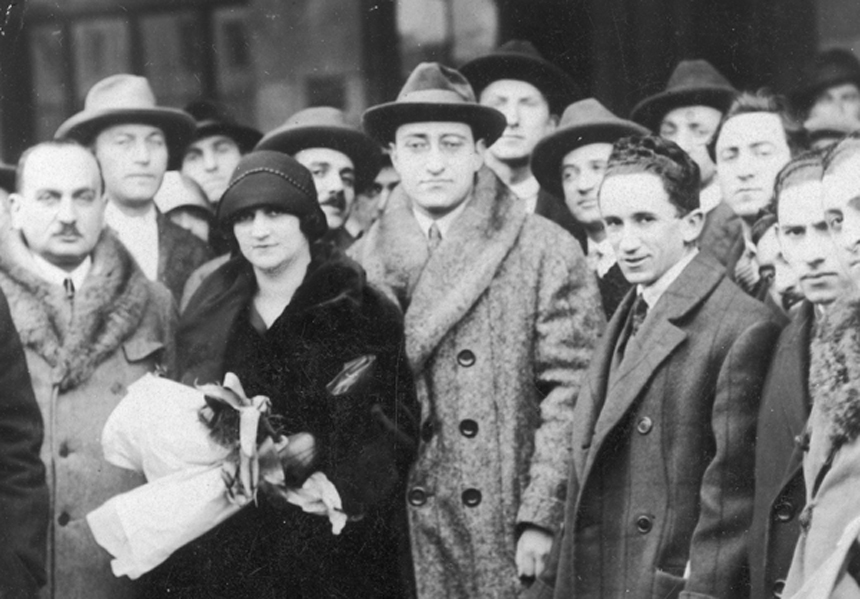
The arrival of the only president of Poland to visit Lviv during the interwar period was overshadowed by an assassination attempt that was organized by the Ukrainian underground. A Jew named Stanisław Steiger was caught at the scene of the crime. In order to have the charges dropped against him, Jewish circles cooperated closely with the Ukrainian Military Organization (UVO).
In early September 1924, the press circulated the following report issued by the Polish Telegraphic Agency: “Lviv, 5 September. During the visit of the President of the Polish Republic to the voivodeship office in Targi, a man on Mariacka Square, with the goal of spoiling the uplifting atmosphere that reigned in this city on the occasion of the President’s visit, threw a small bomb at a detachment of Uhlans riding in the President’s escort, which did not explode right away but began emitting smoke after being trampled by the horses’ hooves.
It has been established that the would-be assassin was one Stanisław Steiger, who works at the Meinl tea warehouse. Military experts confirmed that the bomb was a mixture of powder, but it could not cause any great damage.
The demonstration did not leave a single impression and had no effect on the uplifting mood in which the entire population welcomed the President.”
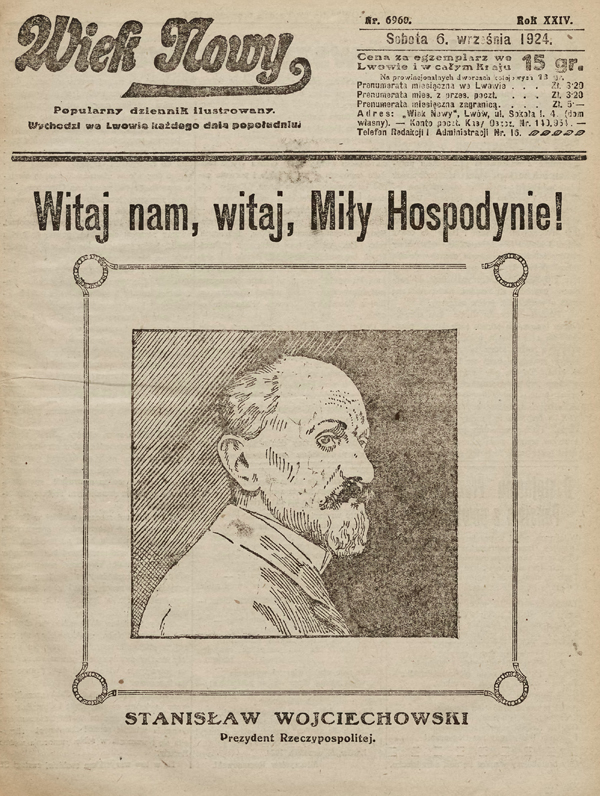
A year and a half earlier, in March 1923, the Western powers agreed to include Galicia in the Second Polish Republic. The Ukrainians were grievously pained by this decision, and a twenty-thousand-strong crowd of people next to St. George’s Cathedral repeated the oath after the patriarch of Ukrainian politics Yulian Romanchuk:
“We, the Ukrainian people, swear that we will never agree to Poland’s rule over us, and we will use every opportunity to throw off this yoke of slavery that is so hateful to us and to unite the entire Ukrainian nation in a single, universal state.”
The Ukrainian–Polish conflict had a longer history. The war for Lviv and Galicia began on 1 November 1918 and ended in July 1919. The Galician Army, lacking ammunition, crossed the Zbruch River, and at the Paris Peace Conference in Versailles, Poland was allowed to occupy Galicia temporarily.
The Ukrainians did not recognize the occupation and began forming clandestine groups within the milieu of former military men. In 1921 in Lviv one such group, the Ukrainian Military Organization (UVO), made an attempt on the life of the head of state Józef Piłsudski.
Despite the failed assassination attempt, this was a “wake-up call” indicating that it was dangerous for the leader of Poland to travel to the capital of Galicia.
President Stanisław Wojciechowski’s visit to Lviv, Zolochiv, and Peremyshl in September 1924 featured a broad program. Nevertheless, this was the first—and last—official visit to Galicia by a president of the Polish Republic.
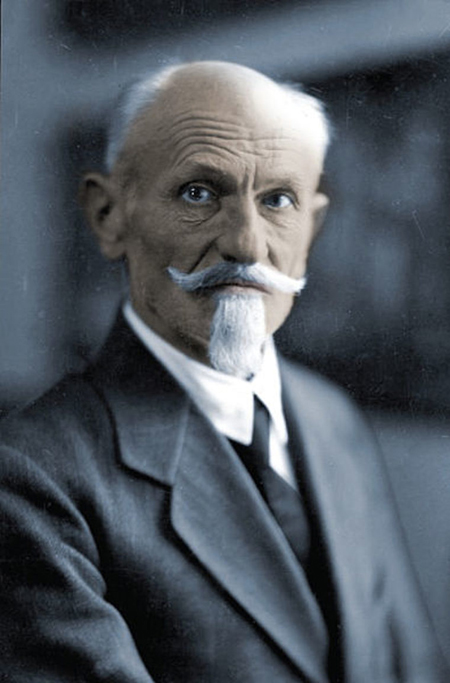
The scale of the preparations for the president’s visit to Lviv recalled the preparations for visits by monarchs. In fact, the young Polish Republic had no other experience.
The City Council urged residents to decorate their “homes, balconies, and windows with banners, emblems, rugs, and flowers.” Government structures shortened the workday, and several professional unions appealed to their members to turn this day into a holiday.
The main program event was the opening of the Eastern Trade Fair. Henceforth, this exhibition would be the site of confrontations between the Ukrainian underground and the Polish administration, but the first such occurrence happened in September 1924.
The lawyer Stepan Shukhevych recalled: “The ceremony marking the opening of the Eastern Trade Fair took place in Lviv and was attended by the newly-elected president Wojciechowski. The weather was beautiful. All the Ukrainians ignored this festive day, which was entirely natural and logical.
All elderly citizens tried not to wander the streets, and only those who had to were out and about. There were rumors that this year young people would ‘carry out’ some ‘story.’”
The Ukrainians reacted to the president’s visit with a boycott. The daily newspaper Dilo published information about Wojciechowski’s visit only the next day and in the context of a passing mention that appeared in Gazeta Lwowska, which listed “all the dignitaries and crowned heads whom Lviv over the course of its long life has welcomed with banners, stickers, illuminations, and festoons—all the way to Tsar Nicholas II, inclusively.”
The Ukrainian newspaper noted ironically: “All this passed like a dream, and now Wojciechowski, the second President of the Polish state, is arriving now.”
Despite the Ukrainians’ mood, protocol demanded that an official meeting with the representatives of the largest national minority had to take place. No special pretext had to be sought, as the program included the president’s visit to three cathedrals: Roman Catholic, Greek Catholic, and Armenian.
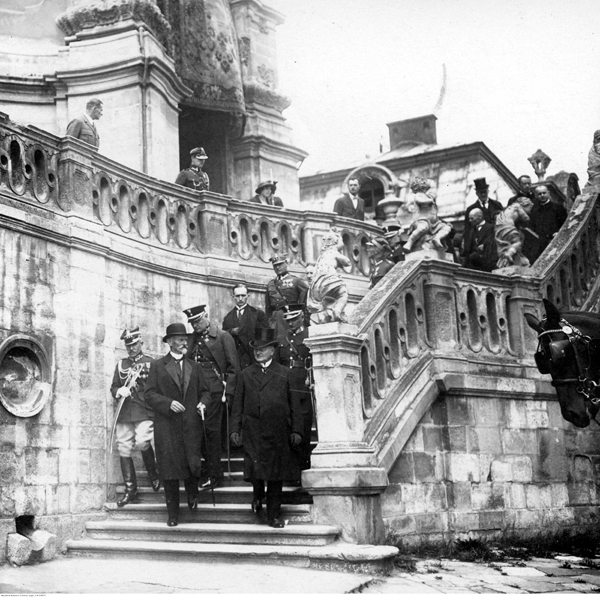
Summarizing the visit to St. George’s Cathedral, the press published the smallest of announcements, and Zynovii Knysh, historian of the UVO, noted the following:
“When he [the president—S.L.] entered the church, the metropolitan handed him some holy water. Mitred Reverend Biletsky said a short prayer, during which Wojciechowski sat next to the metropolitan.
After the short prayer, the metropolitan gave Wojciechowski a crucifix to kiss, and that was the end of the pageant that had lasted no longer than five minutes, and in this time, no one said a single word to the President.”
The Ukrainian underground decided to carry out an assassination attempt on the Polish leader, and Fedir Yatsura, the head of the UVO’s chemical laboratory, was assigned to build a bomb. Despite his lack of experience in this field, he coped with his task:
“There were two bombs; one made of melenite, which we had in abundance at the time, having acquired it from Polish military warehouses through Ukrainians performing their military service, or simply purchasing it from Poles through proxies; the second one was made of ecrasite, of which we had insufficient quantities at the time. The explosive force of each of them was calculated at a distance of ten meters; meaning, complete destruction would take place within a ten-meter radius from the place where the bomb would fall.”
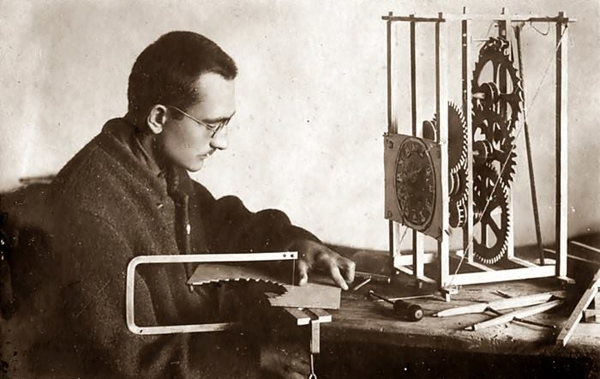
Two fighters, Teofil Olshansky from Peremyshl and Mykola Yasinsky from Stanyslaviv (today: Ivano-Frankivsk—S.L.], were brought to Lviv. It was risky to involve the Lviv membership because during visits of official people the police made preventative arrests of dangerous individuals.
Under Yatsura’s supervision, the young men learn how to throw rocks of a weight similar to that of the bomb, and on 5 September they are positioned along the route to be taken by the President. The press had published the detailed program and itinerary.
Olshansky stationed himself at the intersection of Copernicus Street and Mariiska Square (today’s main street of Lviv, Prospekt Svobody—S.L.]. He was to throw the bomb first, and if it did not explode, he was to fire a revolver. Yasinsky was stationed with the ecrasite bomb, which posed the biggest danger, a hundred meters farther along Wojciechowski’s route.
“You can hear the din getting louder. Cries are coming from a distance; people are shouting ‘Niech żyje’ [Viva!],” Olshansky recalled. “I see the riders with swords drawn, I didn’t pay attention to whether it was the police guard or the military escort. The retinue is riding slowly, you can already see Wojciechowski, he is standing in something like a carriage or a fiacre, with a gray beard, in his hands he is holding a cylinder, he is smiling and bowing from side to side.
The crowd all around is yelling ‘Niech żyje,’ waving their hands and hats, shrieking so much that one’s ears hurt. And my moment is coming right now … The long wait has somewhat dulled my elevated, nervous mood; once again my spirit tenses to the point of pain. Another second or two, and it’s time to throw.
But I'm so squeezed from all sides that there is nowhere for me to stretch out my hands! I jerked with a sudden movement, made some space around myself, and threw the bomb in an arc above people’s heads, aiming between the horses and the carriage.”
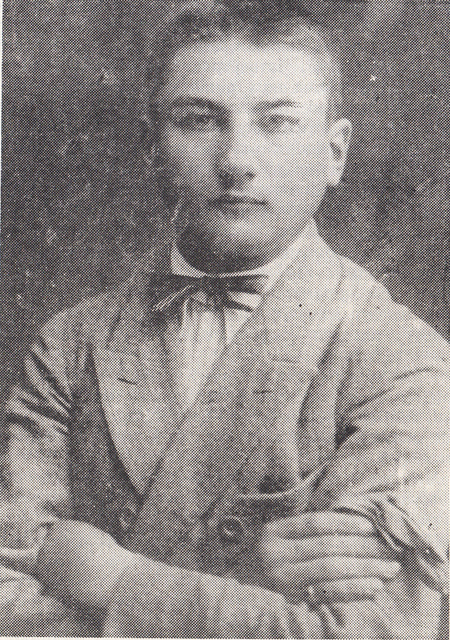
When the bomb fell, it didn’t explode, but when the horses trod on it, it began to smoke and caused a panic. Later it would be established that humidity had affected the melenite, and this saved the President and dozens of people around him. The second bomb was not used; the entire escort was turned back, and they left the square by the previous route.
The fighters had been warned that they could not run away right after the assassination attempt, so as not to attract undue attention to themselves. “That night everyone expected new searches and arrests, but the night passed calmly, and strangely enough no one ‘bothered’ Ukrainians,” Stepan Shukhevych noted in his memoirs.
Later it was learned that a Jew named Stanisław Steiger was captured at the site of the attack. Suspicion bypassed Ukrainian revolutionaries and fell on Zionists and communists.
According to Shukhevych’s information, the Ukrainians organized another attack, which was supposed to take place the next day, not far from the place of the earlier assassination attempt:
“Wojciechowski was supposed to deliver a speech or greet a parade on Mariiska Square, in front of the Mickiewicz Column. The place where he was supposed to stand and where he had indeed been standing afterwards was marked a few days before the parade in such a way that a large square was drawn on the ground with lime or chalk. As luck would have it, the canal flowed right beneath this square. So, the UVO capitalized on this opportunity.
A Ukrainian canal worker led a member of the UVO at the proper moment right underneath that square. There he placed a bomb that was timed to go off when Wojciechowski was supposed to be standing overhead there. Everything was done according to plan, but the bomb exploded too late—after the parade. A sinkhole opened up there.”
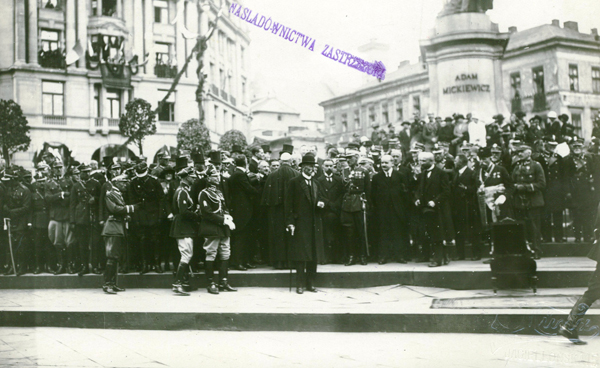
At the moment, all attention was concentrated on Stanisław Steiger. Witnesses claimed that he was the one who threw the explosive device at the president. Steiger would later describe his adventure at his trial:
“Standing there, I noticed someone throwing a package wrapped in newspaper at the President’s coach that was driving by. When I realized that it was a bomb, I ran to the nearest gate; other people were also running away.
Inside, I heard a woman’s voice: ‘He ran to the gate, he’s in a light-colored coat.’ I thought that they might be talking about me. I took off my hat and stepped into the street. That’s where I was arrested.”
The Steiger case was extraordinarily important both to Poles, who wanted to put a quick and decisive end to the assassination attempt, and to Jews. The defendant was an active figure in the Zionist movement, and Jews, as is well known, do not abandon their own in times of trouble.
A tribunal consisting of four judges awaited the arrested man, and within 72 hours after the end of the trial, they were supposed to grant unanimous approval for the death sentence or transfer the case to an ordinary court. But the issue was not just about a single person’s life; the safety of the entire Jewish community was at risk.

Memories of the great pogroms of November 1918, when the Ukrainians abandoned Lviv after three weeks of alarming battles and the Polish population launched mass pogroms that claimed, according to various estimates, the lives of a hundred Jews, were still fresh.
The distinct possibility that the Steiger case might turn into a bigger problem was borne out by Wojciechowski’s return to Warsaw. On the way back, he stopped in Przeworsk, where Jews were expelled from the delegation that was supposed to greet the President, and Jewish children were removed from the column of welcomers on the pretext “that Jewish children not do what happened in Lviv.”
The arrest of an innocent Jew was never part of the UVO’s plans. The underground was prepared for the killing of the president, the death of the assassin or his arrest and death sentence, but Steiger’s arrest was a surprise that sparked serious discussions.
A few days later the Zionist newspaper Chwila published a letter to the editor from the UVO Command:
“Honored Editor! The attempt on the life of the president, which took place at around 15:00 on 5 September in Lviv, on Copernicus Street, was organized, along with a number of other operations, by the Ukrainian Military Organization and its members, Ukrainians.
After the UVO member threw the bomb, he realized its ineffectiveness. Remaining for some time in place, he tried to carry out his mission by firing a revolver. However, unable to do this, he inadvertently saved his life. While he was standing back, another man, completely uninvolved in this matter, began to run.
At this very moment, the completely innocent Steiger was arrested. We regret that the actions of the UVO unintentionally brought much harm to an innocent Jew and led to new attacks on the Zionist Party and the Jewish community.”

The Jewish community seized upon the letter, and Zionist deputies in Warsaw actively spread the news about the involvement of Ukrainian revolutionaries. Besides the UVO’s letter, the press would publish the grim news that people at the very top were interested in the case and the president and the premier had heard reports from the Minister of Internal Affairs and Minister of Justice.
It seems that Steiger had few chances to slip the noose. The UVO’s letter, whose authenticity was difficult to prove, was a mediocre argument for the trial that began on 15 September.
Two witnesses testified against Steiger: the theater actress Maria Pasternakivna and a court employee named Feliks Levytsky. It is thanks to them that Steiger was caught. A few additional witnesses confirmed the defendant’s guilt.
Military experts praised the bomb that consisted of four explosive mixtures, but which did explode because when it fell, it hit a horse, the impact thus dulled. The bomb’s explosive power would have destroyed everything within a radius of eight to ten meters.
In his summation, the prosecutor had no choice but to admit:
“During the existence of the young Poland, state leaders visited Lviv on two occasions. Both times they were accompanied by the specter of death. Three years ago, the then head of state Józef Piłsudski arrived in Lviv. A hand, armed with a revolver, fired at him.
Three years later, around the same date, Stanisław Wojciechowski, president of the Polish Republic, visited Lviv. A deadly bomb was thrown at him. Some jinx is trying to block the path of our dearest guests from the people of Lviv, from their hearts, from their joyously outstretched arms.”
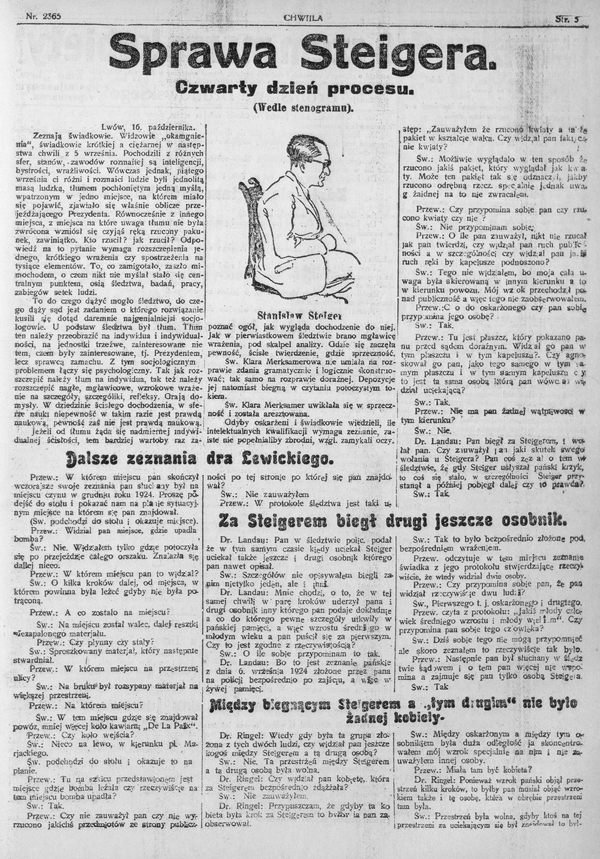
It must be acknowledged that the “jinx”—more precisely, the Ukrainian underground—achieved its goal, even in 1926, when the rector of Lviv Polytechnic University, Ignacy Mościcki, was elected as president of Poland. All official visits to the Galician capital stopped.
The Steiger tribunal ended in favor of the defendant. One of the four judges doubted his guilt, and this was enough to hand the case over to a trial by jury.
That day was described by Zynovii Knysh: “Steiger tore himself away from beneath the gallows, the Jews went mad with joy.”
“In the court building, in front of it, and on adjacent streets thousands of Steiger’s coreligionists awaited the verdict. Traffic on roads slowed to a crawl, and in order to restore order, large units of foot and mounted police were called in. Copies of Chwila were grabbed out of [vendors’] hands, it [Chwila] earned huge sums of money from their special editions, and all of it went to the fund to continue Steiger’s defense.”
The matter did not end there. The defendant had to spend more than a year behind bars until the jury trial took place. During this time Jewish circles tried to gain access to the UVO Command and its leader, Yevhen Konovalets.
The Ukrainian Jew Yakiv Orenshtain, director of the Ukrainian publishing house Halytska Nakladnia, publicized a proposal that was put forward by American Jews:
The UVO and its fighter should take responsibility for the assassination attempt, and Jewish circles have expressed their readiness to bring the fighter over to America, where he will be helped to settle down, and the UVO will be provided with financial compensation.
Despite the view, circulated subsequently, that the UVO rejected these proposals, on the eve of the second trial the name of Teofil Olshansky, the real committer of the crime, appeared in the German-language press, and he himself provided the Berlin police with much information about the assassination attempt.
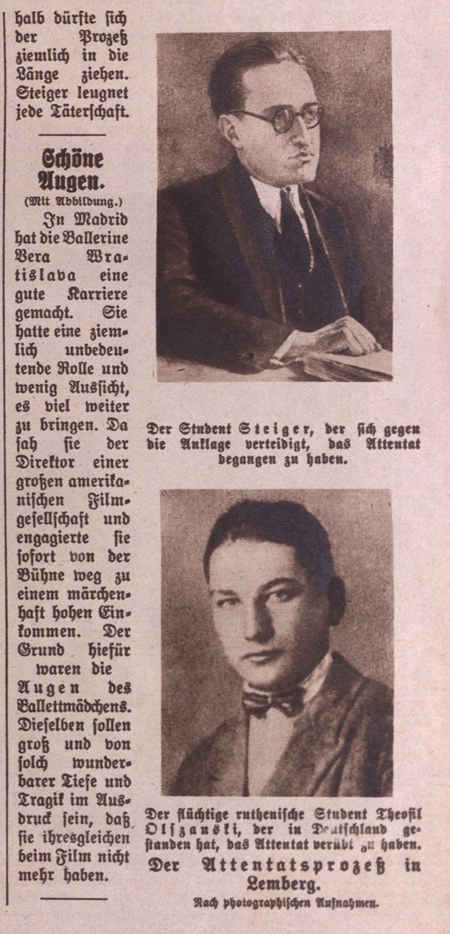
All these facts upset the apple cart for the prosecutor, and on 9 December 1925 a correspondent of Dilo thus described the complex issue:
“The prosecutor’s office and the criminal police are inflexible in their support of the accusations against S. Steiger. The defense and defenzywa [Polish interwar secret police—Ed.] and Jewish political factors are searching—equally inflexibly—for the [would-be] assassin in Ukrainian conspiratorial circles.
Jewish public opinion entirely upholds the view of the defense and the defenzywa. Ukrainian and Polish public opinion is not unanimous in their assessment of this extremely complex event.”
The Polish criminal and political police managed to quarrel with each other because, even though the case was in the hands of the former and it maintained Steiger’s guilt, the latter had attested to a “Ukrainian footprint” from the very beginning.
Because of the botched case, the most famous policemen in Lviv—Commissars Kajdan and Lukomski, who had long been known as the most brutal of investigators—lost their positions.
The police had quite a lot of trouble because various witnesses were appearing and further confusing the case. One of them, Mykola Mykytyn, constructed his own version of events featuring a new assassin, one Panchyshyn.
Other individuals were found who wanted to sell their information to interested Zionist circles and thereby earn some money. Over time, Mykytyn went from being a witness to a defendant, and for providing false testimony he was sentenced to six years in prison.
Meanwhile, the Jewish community united in its support for Steiger. During the trial, the lawyer and politician Nathan Lowenstein declared: “It is normal when Jan, Michał, or Pawel commit a crime and then Jan, Michał, or Pawel are punished for this. But when a Jew is guilty, then it is not just he who is guilty but all Jews; this was done by all the Jews.”
The trial ended on 17 December 1925, when eight out of twelve jurors declared Stanisław Steiger innocent. Crowds of Jews greeted him as a hero.
Some, however, like Dr. Landes, vice-president of the Lviv Chamber of Lawyers, remarked after meeting the Ukrainian defense lawyer Stepan Shukhevych after the trial:
“Listen, friend! Why are those Ukrainians so stupid and defended Steiger? What would it have mattered if one innocent Jew had been hanged? But then we Jews and you Ukrainians would have had a fearsome trump card against Poland.”
4 April 2019
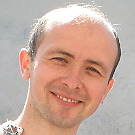
Sviatoslav Lypovetsky
Journalist (Ternopil)
Originally appeared in Ukrainian @Istorychna Pravda
Istorychna Pravda’s ‘Shalom!’ media project, which explores the Ukrainian-Jewish dialogue, is made possible by the Canadian non-profit organization Ukrainian Jewish Encounter.
Translated from the Ukrainian by Marta D. Olynyk.
Edited by Peter Bejger.
NOTE: UJE does not necessarily endorse opinions expressed in articles and other materials published on its website and social media pages. Such materials are posted to promote discussion related to Ukrainian-Jewish interactions and relations. The website and social media pages will be places of information that reflect varied viewpoints.



















